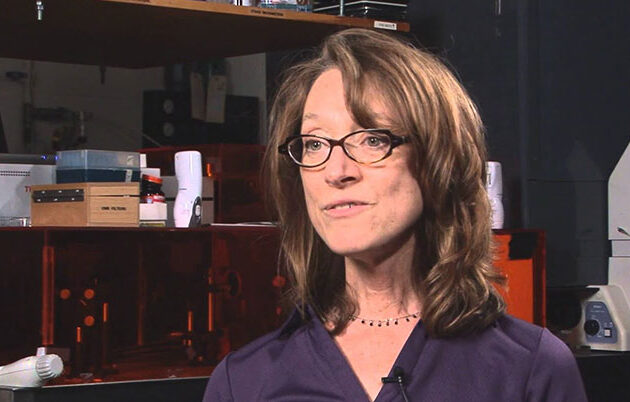These results suggest how the highly prevalent CMV could make cancer cells more resistant to current therapies. They also provide an explanation for why some early clinical trial results are encouraging for GBM patients who receive anti-CMV drugs.
“Viruses that cause cancer, for example HPV and cervical cancer, in all cases there are viral proteins that transform cells, converting a normal cell into a cancer cell, and the virus has to be maintained in nearly 100 percent of the tumor cells,” said Dr. Rob Kalejta, a professor with the UW McArdle Laboratory for Cancer Research and the Institute for Molecular Virology and senior author of the study. “The controversy about CMV is that it is quite different.”
If CMV causes GBM, then all GBM cells should contain the virus as seen with other virus-caused cancers. But previous GBM studies report conflicting results about whether CMV is present at all in GBM, and CMV is certainly not detected in most of the GBM cancer cells.
“Every year you’ll see some group say they found CMV in glioblastoma or other cancers, and then some other lab will jump in and say that they couldn’t find it,” said Dr. Che Liu, a postdoctoral fellow in Kalejta’s lab. “CMV is probably on the margin of the detection limit by current methods, making it hard for different labs to achieve the same conclusion, and I think our study provides an explanation for why the level of CMV is so low.”
Liu first looked for CMV in surgical GBM samples and, like previous studies, only detected it in some samples. But he made a new observation that the virus was subsequently lost in all growing and dividing GBM samples, at least in the lab. Rather than the cells actively expelling the virus, he suspected, and then confirmed, that GBM cells which do not contain the virus grow faster and outcompete CMV-infected GBM cells.
“When I saw the slow growing population, I was excited, because that’s a typical feature of cancer stem cells,” Liu said. “I went back to look at other characteristics that cancer stem cells usually possess.”
He next performed experiments commonly used to look for two other hallmarks of stem cells: their ability to “self-renew,” and resistance to temozolomide, the current standard GBM chemotherapy. In both sets of experiments, cultured cell lines that contained some CMV-infected GBM cells showed higher levels of stem cell properties than cell lines not infected with CMV. He further showed that treating GBM cells with an anti-CMV drug restored sensitivity to temozolomide.
CMV infects 60 percent to 90 percent of the population worldwide and is mostly asymptomatic in adults, though it is the leading viral cause of birth defects in children. After infection, CMV can remain latent in cells, and active infection may recur if someone becomes immunocompromised. Both cancer and cancer treatments (such as chemotherapy and radiation) are known immune suppressors. The researchers’ current model is that CMV infection does not cause GBM, but as the immune system is weakened, a latent or new CMV infection could promote cancer resistance to therapies by converting a fraction of GBM cells to therapeutic resistant cancer stem cells.
“Therapeutically resistant cells identified in many cancers seem to have stem-like properties, the so-called cancer stem cells that may act like tumor seeds despite therapies. They can survive surgery, radiation and chemotherapy, cause cancer regrowth or metastasis,” said Dr. John Kuo, professor of neurological surgery and co-author of this study. “Our findings provide additional support for testing antiviral CMV medications against GBM, and that cancer stem cell mechanisms might be one area of further investigation for how GBM grows and recurs despite current aggressive therapies.”
Kalejta sees this work as just the beginning for understanding CMV’s role in cancers, including other cancers for which the presence of CMV has been controversial.
“We’d like to understand, what is the molecular mechanism behind how the virus induces these stem-like phenotypes? What viral proteins are required for this process? Could this process happen in other cancer types?” Kalejta said.
The study was published in the journal mSphere. Dr. Paul Clark from the Kuo group also contributed to this work. The study was funded in part by the NIH (grants R01-AI080675, R01-CA15880 and R01-NS75995, P30 CA014520-UW Comprehensive Cancer Center Support grant), the Roger Loff Memorial Fund for GBM Research, and the Dept. of Neurological Surgery.

